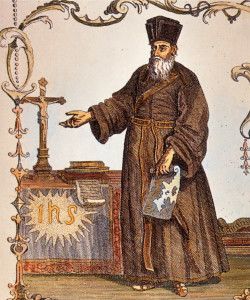11/05/2020
Matteo Ricci – The Apostle of Inculturation
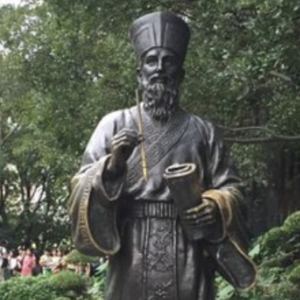
Today, May 11, we commemorate the death of Matteo Ricci, which occurred 410 years ago. If the efforts of Pope Francis – who had revealed that he was working on his beatification – are successful, then that date would be chosen as his feast day.
In Brussels, Belgium, a new Jesuit establishment opened last year bearing his name, in memory of his inculturation efforts from which we can draw much inspiration. A future article will tell you more about this establishment.
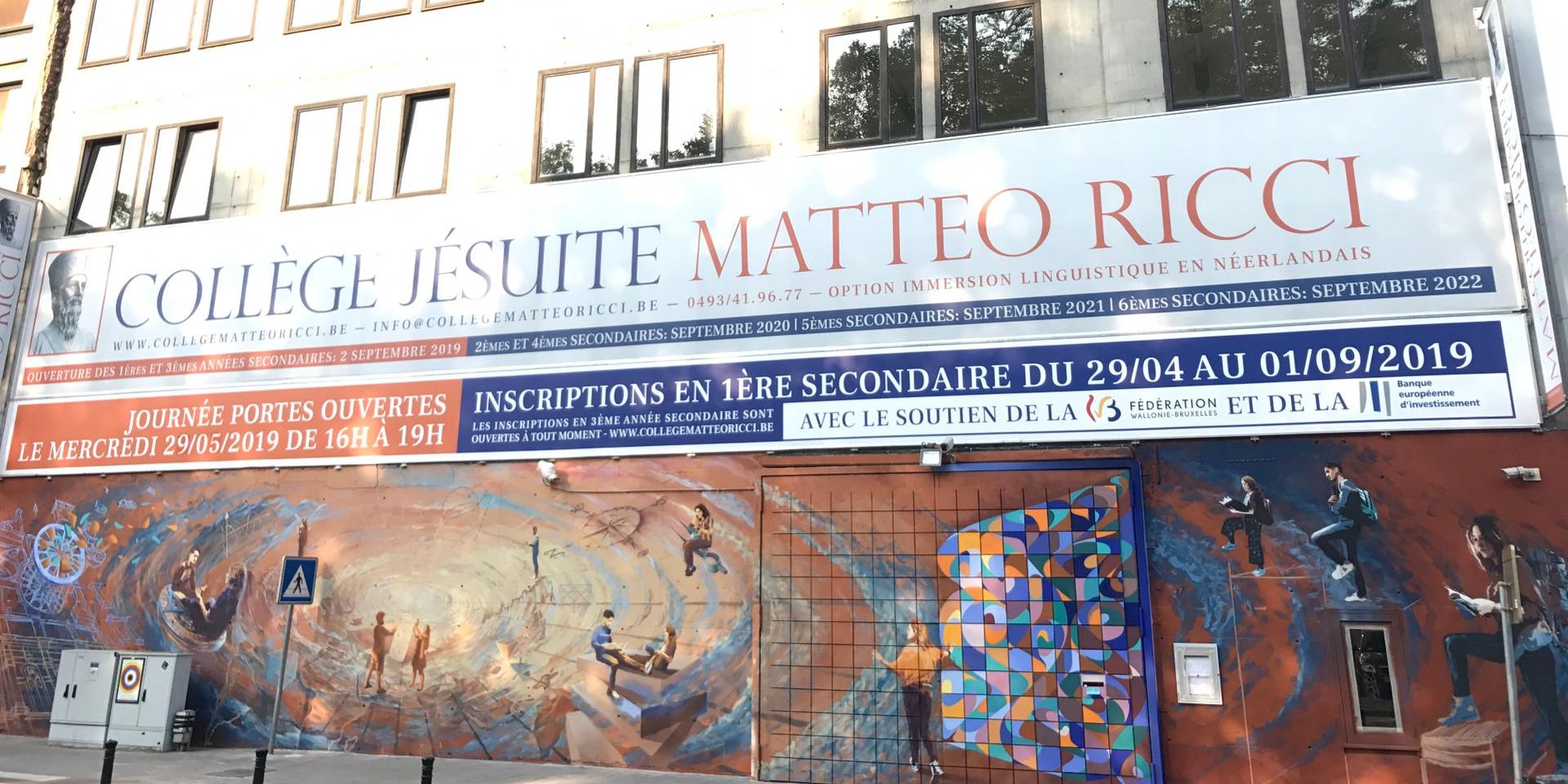
Matteo Ricci College
Matteo Ricci (sometimes called Mathieu Ricci by the French) was born on October 6, 1552. On December 3 of the same year Saint Francis Xavier died alone on the Chinese island of Sancian (Shang Chuan, Guangdong), at that time under Portuguese rule. St. Francis Xavier, contemporary and compatriot of the great St. Ignatius of Loyola, had gone on a mission to India, then to Japan, before leaving for China, whose mainland he never reached. It was Father Matteo Ricci who would continue his odyssey, like Joshua who was to complete Moses’ footsteps. Here is his story.
Matteo Ricci was born in Macerata (Marches, Italy), then within the Pontifical States. His father is a pharmacist and he is the eldest of thirteen children. He studied at the local school before going on to the Jesuit College in Rome. The Society of Jesus was then only about thirty years old (year of foundation: 1539), but was already well known for its humanistic teaching; so he decided to join it in 1571, the year of the glorious battle of Lepanto, entering the novitiate when he was only 19 years old. His father opposes it, but Matteo Ricci is determined. He studied in Rome and Florence, where he enriched his knowledge in mathematics, law, philosophy and theology, especially under the teaching of the Franconian scholar Christophorus Clavius, a personal friend of Galileo’s and famous for having laid the foundations of our modern calendar, presented to and promulgated by Pope Gregory XIII and known as the Gregorian calendar, still in use today, as well as for having been the first to use other mathematical notions that have become essential today. This is where Father Alessandro Valignano, who entered the novitiate a year before Matteo, but was already much older than Matteo, points him out. Alessandro Valignano was then Visitor of the missions in India and the Far East, a sort of Jesuit leader for all of Asia, a responsibility entrusted to him by the Belgian Jesuit Everard Mercurian, 4th Superior of the Society of Jesus. Valignano decided to send Matteo Ricci to Portugal, to the prestigious University of Coimbra, in order to quickly learn Portuguese, a language that he would need to know in order to go on mission to the East Indies, which had been predominantly Portuguese since the Treaty of Tordesillas established more than half a century earlier. After quickly acquiring a fairly good knowledge of the Portuguese language, he left Lisbon in 1577 for Goa, a Portuguese-speaking Indian city, just as Francis Xavier had done thirty-five years earlier. He completed his formation in the Portuguese East Indies for another four years, sometimes in Goa (Portuguese until 1961), sometimes in Cochin (Portuguese until 1663, now Kerala), where he was ordained priest on July 25, 1580, at the age of 27.
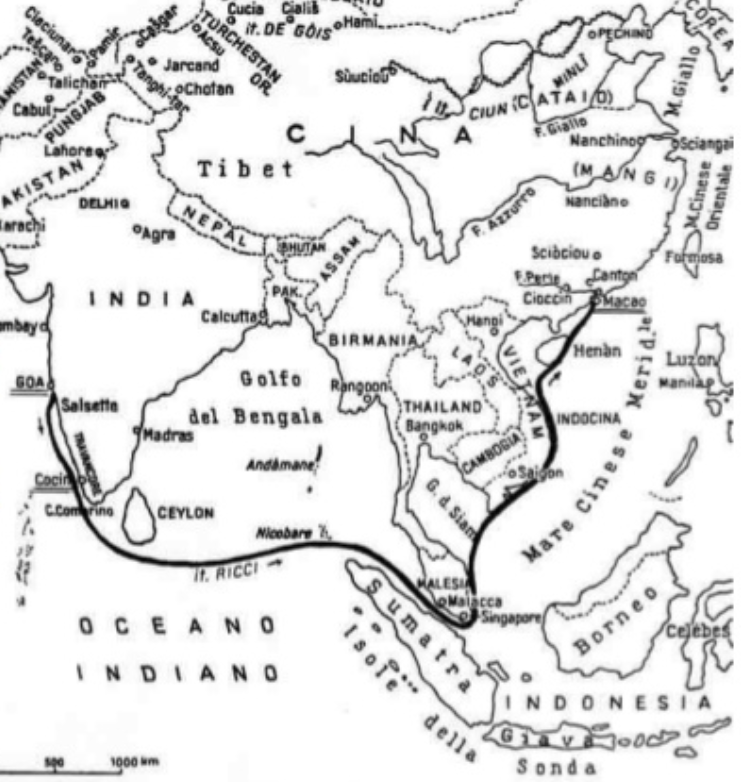
Ricci’s traveling in FX’s footsteps
There, just as in Rome, Florence and Coimbra, he was admired by his masters and made solid friendships thanks to his affectionate nature and thoughtful charity. Still under the supervision of Father Valignano, Matteo Ricci was sent by him to Macao, a Portuguese trading post facing mainland China, the Middle Kingdom then dominated by the great Ming dynasty which reigned there for nearly three centuries. Father Alessandro Valignano had chosen Macao as the starting point for expeditions to imperial China, then forbidden to Europeans and therefore closed to the knowledge of the Gospel; he sent Matteo Ricci there in 1582. At the end of a dreadful crossing, in a sea swept by typhoons during which the fever failed to overcome him, Ricci finally arrived on the island, accompanied by only one companion.
Now Ricci is still practicing the impossible. He begins learning Chinese languages, complex languages without alphabet, but made of calligraphic characters, each of which represents a word that can take on several meanings depending on the intonations and which in turn becomes the root of other words when one or other trait is added to it. Matteo Ricci will continue to perfect his knowledge and writing of Mandarin, which he is already fluent after three months! – and which he will one day end up managing perfectly. He also immersed himself in the complex culture of the country that he was to evangelize and was initiated into the philosophical-religious currents that often intermingled and sometimes contradicted each other: Confucianism, Buddhism and Taoism.
One year later, in 1583, the unthinkable happened. Having heard of his scientific and technical gifts, a Mandarin invited Ricci to practice them at his home in Zhaoqing, about 100 kilometers from Canton, on the banks of the Pearl River. There he met up with an Italian companion and compatriot who would always remain faithful to him: Michele Ruggieri. Michele joined the Company at the same age as Ricci, at the age of nineteen, but ten years earlier than Ricci, in 1562. Matteo Ricci remained in the region for eighteen years, preaching the Gospel and writing books on geometry and religious morals in Chinese.
In doing so, he discovered the pre-eminence of the literate caste. Culture will then be his Trojan horse. Having learned that the monks were rather badly considered, Matteo and Michele decide to change their approach… as well as the way they dress. So they drop their Buddhist monks’ clothes for those of the learned and get into the habit of presenting themselves as “religious who have left their native country in the far West, because of the fame of the Chinese government, where they wish to remain until their death, serving God, the Lord of Heaven”. They speak to scholars about God, using Confucian wisdom and writings, taking care to underline what is similar to Christianity, establishing a dialogue.
Matteo Ricci also adopted local methods. He himself explained this in a letter he wrote to a Jesuit confrere in 1586: “Since we have banished from our people the name of bonze, which is equivalent to brother in their own country, but in a very vile and dishonorable sense, we shall open in these beginnings neither church nor temple, but only a house to preach, as their most renowned preachers do”.
In 1596, for the attention of Prince Jianan and the scholars, he composed and published the “Treaty of Friendship”, his first work entirely in Chinese, which is a collection of one hundred maxims of wisdom from the West. He later translated the four books of Confucius to show that this master believed in the unity of God and the immortality of the soul.
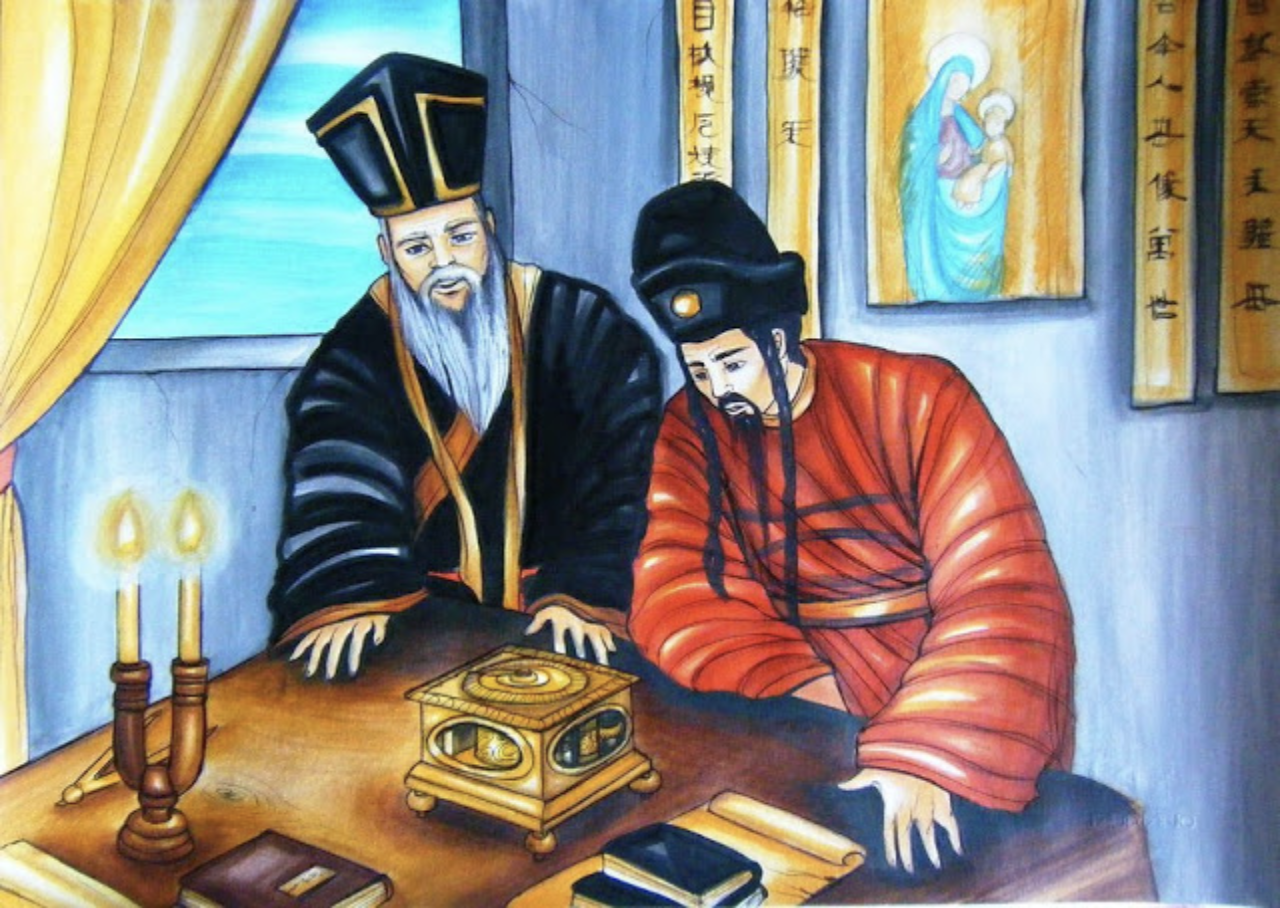
Matteo Ricci in China
He manages to get in touch with other mandarins, thanks to his great knowledge of mathematics and astronomy, and thanks to these contacts, he can now begin his journey to Peking, the imperial capital, located more than three thousand kilometers away. We are entering the 17th century, and Matteo Ricci is forty-eight years old; he wants to give his life to the Chinese people in the originality of their culture, and to continue the work that Francis Xavier was unable to complete. From one day to the next, he will go north, accepting the hospitality of the notables, sometimes rejected; he is already responding to the desire of his hosts for the opening of a secretarial school, a residence and the construction of a church.
He established a small community of three Jesuits in Nanjing, in the province of Jiangsu, on the banks of the famous Blue River (sometimes also called the Yangtze River), known there as the Yangtze River, which is, along its 6,380 km, the longest river on the Asian continent, and the third longest in the world.
In January 1601, in the company of Father Cattaneo and two Chinese Brothers, he arrived in the Forbidden City at the invitation of the emperor himself. He was thus the first European to be invited to the imperial court of Beijing, to be with Emperor Wanli. According to protocol, at the emperor’s audience, he remains separated from the visitors by a curtain; they must first have sent him their portrait. From then on, Matteo Ricci and his companions presented him with sumptuous gifts, such as a spruce tree, two chiming clocks, a triangular crystal prism refracting the solar spectrum, and a large portrait of a Madonna and Child. His meeting with the Emperor’s relatives was the driving force behind the development of modern clockmaking in China. He then offered the last print of his “world map”, with Asia at the center, between Europe and America. China thus became the “Middle Kingdom”. Widely distributed, this planisphere brought China into the geographical knowledge of the West; it became a nation.
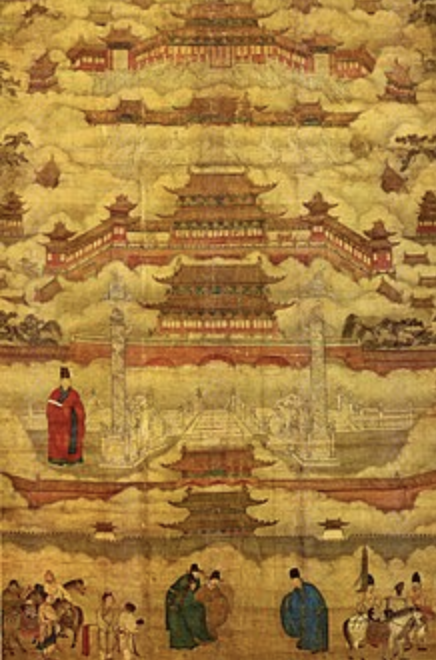
The forbidden city at the time of Matteo Ricci
In the Jesuit residence located in the heart of the Imperial City, Ricci received many guests: notables of the palace, scholars, including Xu Guangqi, with whom he became friends. The latter will even end up converting to Christianity and being baptized in 1603, under the name of Paul. With him, he wrote the Six Elements of the Geometry of Euclid, based on the Latin text of Father Clavius. It was there that he also wrote his most famous work, “Tianzhu Shyi, the true meaning of the Lord of Heaven”, a true catechesis in the form of a dialogue between two wise men from East and West. At the same time, Matteo Ricci teaches science to the Emperor’s favorite son. Like astronomy and mathematics – which he shares for the reform of the Chinese calendar -, philosophy and clockmaking, music is also used to convey his message and bring about religious conversions while earning the emperor’s good graces. He also sings edifying arias, often with texts translated into Chinese. In 1608, in Beijing, he published a collection of eight arias with accompaniment, with the title Xiqin qu’yi, literally “arias for Western zither”. It was a great success: his reissues followed one another until the 19th century. And if the music seems to have been lost, the Chinese texts have been preserved.
Ricci is thus the first Christian missionary of modern times, and the first Westerner, to have been so close to the emperor. He is considered the father of the Chinese Church. His work and activities have always had a perspective of deep evangelization, even if he did not seek to baptize everyone he meets. In 1605, he had the southern church, the Nantang, built, which is now the seat of the bishopric of Peking.
He achieved a major breakthrough in 1610, at the age of 58 and at the end of his strength, when the emperor granted the Jesuits the freedom to evangelize. When he died on May 11 of the same year, an estimated 2,700 Chinese became Christians. And half of the Jesuits working in China were Chinese. On that day, Emperor Wanli wanted to honor the wise man of the West with a day of national mourning.
Today, 11 May, let us commemorate the memory of that great Jesuit priest, apostle of inculturation, whose miraculous fruits are still visible five centuries later.


